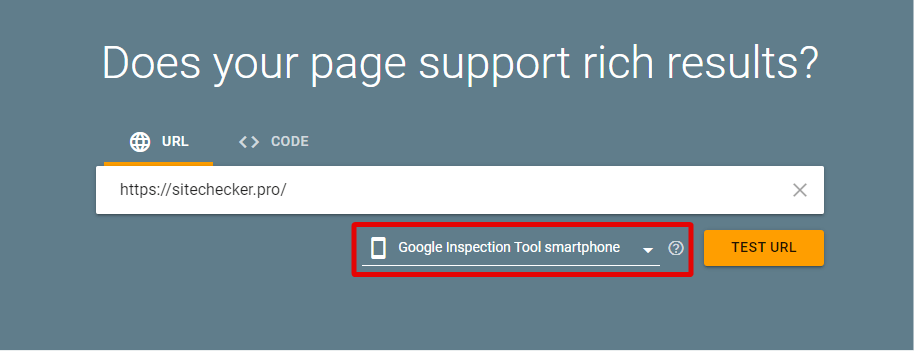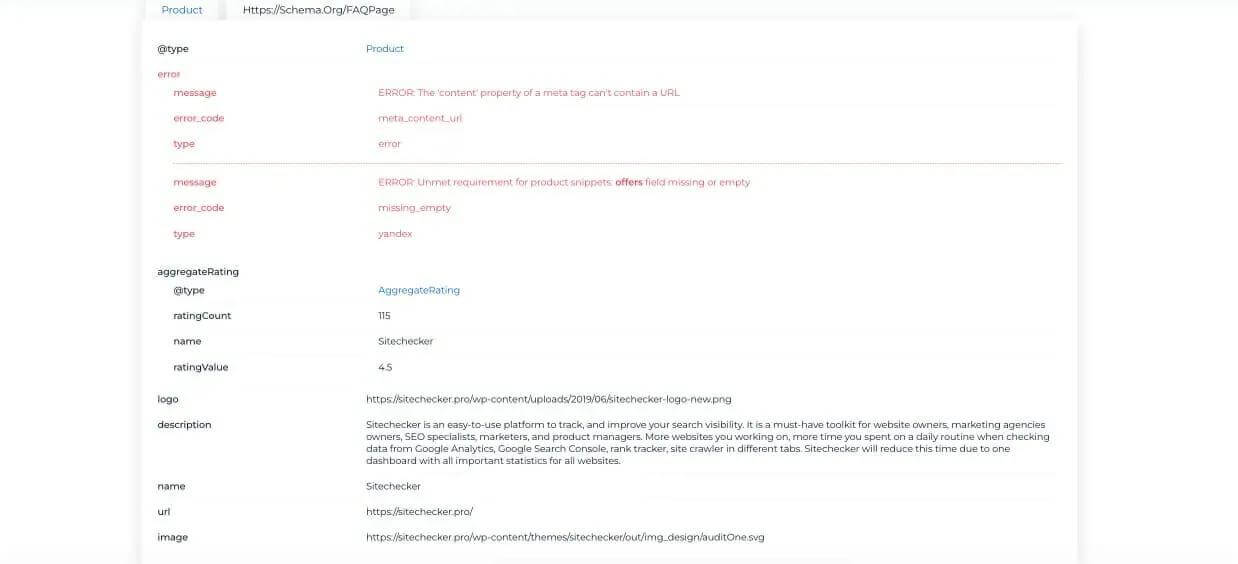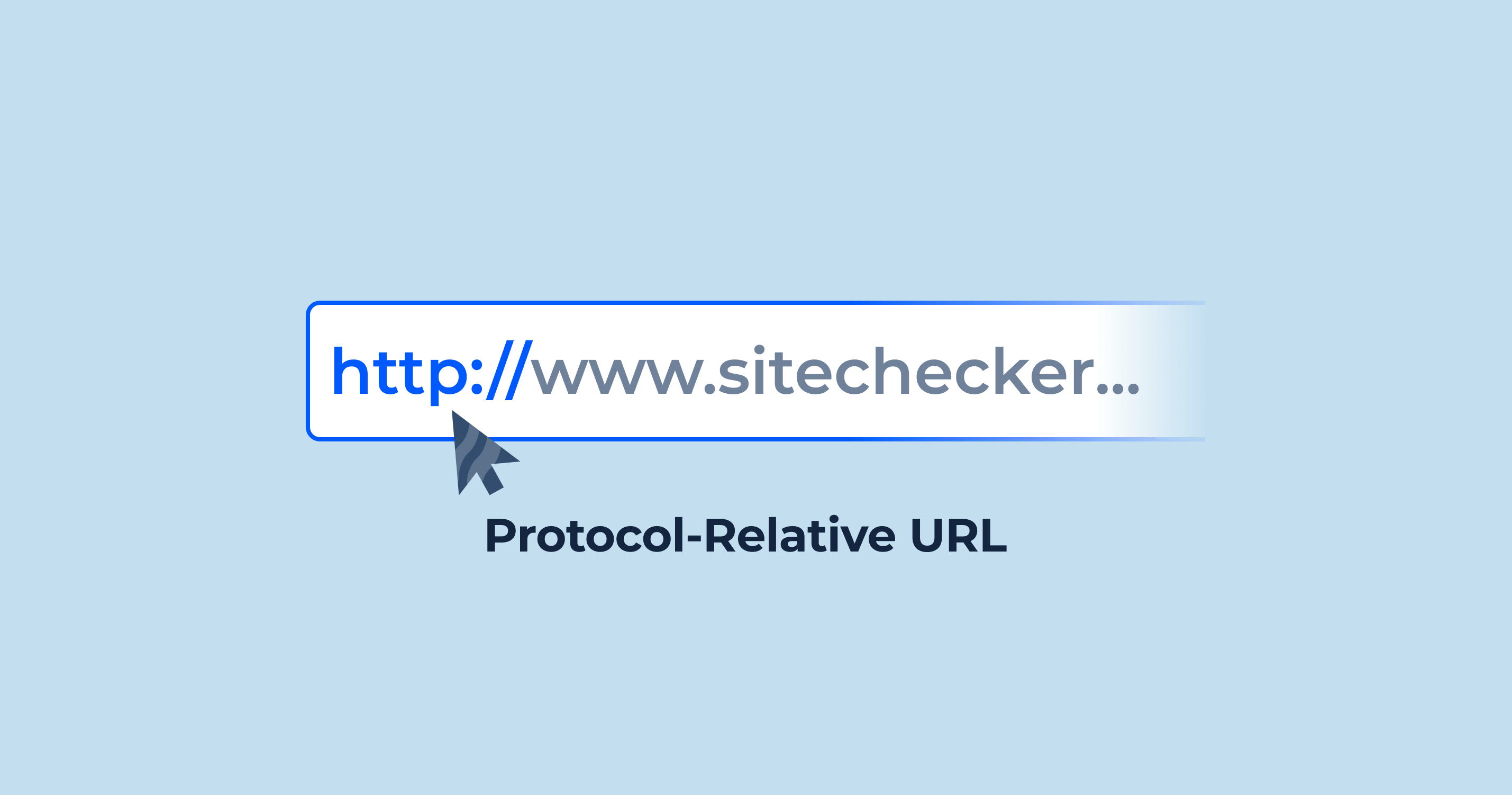What is the Review Schema?
Review Schema is a type of structured data markup that website owners can add to their HTML. It allows search engines to better understand the content on the web page and provides users with a quick snapshot of the review-related information.
Structured data like Review Schema is a part of the broader initiative by search engines, especially Google, to better organize and present information on the web. By using standardized formats for marking up information, website owners can enable search engines to present their content in more enriched ways within search results, such as in the form of rich snippets or other enhanced visuals.

For instance, have you ever searched for a product or service online and noticed star ratings appearing directly in the search results, even before clicking on any link? That visual representation is made possible through the use of Review Schema. It provides a visual aid to users, allowing them to quickly gauge the general sentiment about a product, service, or entity based on aggregated, real user reviews.
The main components of the Review Schema include:
- Reviewer: Who wrote the review. This could be an individual or an organization.
- Review Body: The full text of the review.
- Rating: The rating given by the reviewer, often represented on a scale, like 1 to 5.
It’s worth noting that while Review Schema specifically pertains to aggregate rating of individual reviews, there’s another related schema called AggregateRating, which represents the average score of multiple reviews.
Incorporating Review Schema into your website not only provides potential SEO benefits by enabling rich results but also enhances the user experience by delivering concise and relevant information directly in search results. Proper implementation can lead to improved click-through rates, greater trust from potential customers, and better online visibility.
Why is Review Schema Important?
Review Schema is more than just a technical markup added to websites; it’s a strategic tool in the digital landscape that offers tangible benefits for businesses, search engines, and users alike. Its importance stems from several factors:
| Enhanced Visibility in SERPs | Review Schema can lead to rich snippets – those eye-catching search results with star ratings and review counts. These enhanced listings can improve click-through rates as they stand out from standard search results, providing quick insights into user sentiments about a product or service. |
| Trust and Credibility | In an online world rife with misinformation and countless options, trust is paramount. Displaying reviews and ratings prominently in search results serves as social proof. When potential customers see these endorsements, it instills a sense of trust and authenticity, fostering confidence in your offerings. |
| Improved User Experience | Rich snippets powered by Review Schema provide users with concise, relevant information right at their fingertips, allowing for informed decision-making without the need to click through multiple pages. |
| Potential for Higher Search Rankings | While structured data itself isn’t a direct ranking factor, the improved user engagement it can drive – higher click-through rates, lower bounce rates, increased time on site – can indirectly benefit SEO. Search engines aim to provide the best experience for users, and pages that resonate well with users can be favored in rankings. |
| Informed Purchase Decisions | With Review Schema, users can get a snapshot of what previous customers think about a product or service. This transparency can lead to more informed and satisfactory purchase decisions, reducing returns and boosting overall customer satisfaction. |
| Increased Conversions | By providing clear and immediate insights into the quality and reception of a product or service, businesses can see a boost in conversion rates. When users are presented with positive reviews right from the search results, they are more likely to proceed with a purchase. |
| Feedback and Engagement | Encouraging and displaying reviews can lead to increased customer engagement. It can also provide businesses with valuable feedback, highlighting areas of excellence and opportunities for improvement. |
| Staying Competitive | As the digital landscape becomes more competitive, businesses need every advantage they can get. By implementing and leveraging Review Schema, companies can differentiate themselves from competitors who may not be using this structured data to its fullest potential. |
Review Schema is a vital tool in the modern digital toolkit. It bridges the gap between businesses and consumers, fosters trust, and enhances the overall online experience. In a world where online reputation can make or break a business, Review Schema offers a way to showcase and leverage positive feedback effectively.
Google About Review Schema
John Mueller, a Google Search Advocate, has tweeted about review schema on a number of occasions. Here are some of the key points he has made:
Review schema can help Google understand the content of your pages better, and can lead to rich results in search. This can include things like star ratings, review snippets, and badges.
Google does not use review schema from third-party sources. This means that if you are displaying reviews on your site that have been collected from a third-party platform, you should not mark them up with review schema.
Google does not use review schema for local business listings. If you have a local business listing, you should use the Google My Business platform to submit your reviews.
Google may not use review schema if it is not accurate or complete. For example, if you have a lot of reviews that are all five stars, or if your reviews are very short, Google may not use them.
Here are some specific tweets from John Mueller about review schema:
Google doesn't use review schema for local business listings. If you have a local business listing, you should use the Google My Business platform to submit your reviews.
Review schema can help Google understand the content of your pages better, and can lead to rich results in search.
Google may not use review schema if it is not accurate or complete.
Overall, John Mueller’s advice on review schema is to use it accurately and sparingly. Only mark up reviews that are first-party, and make sure that they are accurate and complete. If you follow these guidelines, you can help Google to better understand the content of simple reviews on your pages and improve your chances of getting rich results in search.
What Review Schema Markup Looks Like
Review Schema markup is a specific set of code that you add to a webpage to provide search engines with more information about the content of that page, specifically regarding reviews. This markup is written in JSON-LD, Microdata, or RDFa formats, with JSON-LD being the most recommended by Google due to its ease of use and integration.
Here’s a simplified example of what a basic Review Schema in JSON-LD might look like:
<script type="application/ld+json">
{
"@context": "http://schema.org/",
"@type": "Review",
"itemReviewed": {
"@type": "Product",
"name": "Example Product"
},
"reviewRating": {
"@type": "Rating",
"ratingValue": "5",
"bestRating": "5",
"worstRating": "1"
},
"author": {
"@type": "Person",
"name": "John Doe"
}
}
</script>
In the example above:
- itemReviewed specifies what the review is about, which in this case is a product named “Example Product”.
- reviewRating provides details about the rating given, from a worst of 1 to a best of 5, with the actual rating being 5.
- author gives information about the reviewer.
Schema Markup – Review vs. AggregateRating Properties
When it comes to reviews and aggregate ratings, there are two primary types of schema markup to understand: Review and AggregateRating.
-
Review Schema:
- Represents an individual review about a specific item, such as a product, service, or event.
- Contains details about the reviewer, the review’s body, and the rating given by that particular reviewer.
- Useful for webpages showcasing individual reviews.
-
AggregateRating Schema:
- Represents an aggregated summary of multiple reviews about an item.
- Displays the average rating and the total number of reviews.
- Ideal for product pages or listings where there’s a need to showcase the overall sentiment or rating from multiple sources.
Here’s what an AggregateRating Schema might look like:
<script type="application/ld+json">
{
"@context": "http://schema.org/",
"@type": "Product",
"name": "Example Product",
"aggregateRating": {
"@type": "AggregateRating",
"ratingValue": "4.5",
"reviewCount": "120"
}
}
</script>
In this example, the product “Example Product” has an average rating of 4.5 based on 120 reviews.
In conclusion, while both Review and AggregateRating Schemas provide valuable information about reviews and ratings, their usage depends on the context. The Review Schema is best for detailing individual reviews, while AggregateRating gives a summarized view of multiple reviews’ collective sentiment. Knowing when and how to use each can optimize the presentation of reviews and ratings on your website.
Guidelines and Best Practices for Creating Review Schema
Implementing Review Schema can be tremendously beneficial for enhancing your content’s visibility and credibility in search engine results. However, it’s essential to adhere to specific guidelines and best practices to ensure the markup’s effectiveness and avoid potential penalties. Here are some fundamental guidelines and best practices for creating Review Schema:
| Genuine, User-generated Content | Ensure that the reviews you’re marking up are genuine and have been written by actual users. Fabricated or self-promoted reviews can lead to penalties and degrade trust with users. |
| Specificity is Key | The Review Schema should be specific to the item that’s being reviewed. For instance, if a page is about a particular product, the reviews and corresponding schema should pertain only to that product, not the general brand or other products. |
| Avoid Duplicate Content | Make sure that the review content marked up on a page doesn’t appear multiple times throughout your site. Duplicate content can confuse search engines and dilute the impact of the schema. |
| Include All Necessary Properties | While some properties in the schema markup are optional, including them can provide a more comprehensive picture. This includes details like the reviewer’s name, date of review, and the itemReviewed property. |
| Use AggregateRating Appropriately | If you’re displaying an average rating from multiple reviews, use the AggregateRating schema. Ensure that the aggregate score genuinely reflects the individual reviews. |
| Stay Updated with Guidelines | Search engines, especially Google, regularly update their guidelines for structured data. It’s essential to stay informed and ensure your markup adheres to the latest recommendations |
| Avoid Extraneous Markup | Only include markup for content that’s visible to users. Adding schema markup for content that’s hidden or not directly relevant can be misleading and may result in penalties. |
| Validate Your Markup | Before going live, use tools like Google’s Rich Results Test to validate your schema markup. This can help identify any errors or issues that might prevent the schema from displaying correctly. |
| Monitor Search Console | After implementing the Review Schema, regularly check Google Search Console for any structured data errors or warnings. Addressing these promptly ensures that your markup continues to enhance your content’s visibility. |
| Respect User Privacy | If user reviews include personal information or data, ensure you have the necessary permissions to display this. It’s best practice to anonymize or exclude any personally identifiable information. |
| Respond to Reviews | Engage with your audience by responding to reviews when appropriate. Not only does this demonstrate active engagement, but it also provides additional content that can be beneficial for SEO and user trust. |
| Avoid Misleading Representations | Ensure that the reviews you showcase and the resulting ratings are representative of the user feedback. For example, don’t highlight only positive reviews if a significant portion is negative. |
By adhering to these guidelines and best practices, you can effectively harness the power of Review Schema to boost your content’s credibility, visibility, and engagement in search engine results. It’s a blend of technical SEO with authentic user engagement, resulting in a richer online experience for users and better performance for businesses.H2 How to Build Review Schema Markup
How to Deploy Review Schema at Scale
Deploying Review Schema on a single product page or blog post is straightforward, but rolling it out across a vast website or multiple domains can be challenging. The larger your online presence, the more crucial it is to apply schema efficiently and consistently. Here’s a guide on how to deploy Review Schema at scale:
-
Unified Templates: If you’re running an e-commerce site or a platform with multiple similar pages (like product pages), ensure that the template for these pages has the necessary placeholders for schema.
When new products are added or reviewed, the schema will automatically populate based on the template. - Use a CMS with Schema Integration: Content Management Systems like WordPress, Drupal, or Joomla offer plugins or modules that allow for easy integration of schema markup. Find a reliable plugin that supports Review Schema.
- Dynamic Scripting: Use scripting languages like JavaScript or PHP to generate schema dynamically based on the content. This is especially useful if your reviews update frequently or if you have numerous products or services.
- Leverage APIs: If you’re sourcing reviews from third-party platforms, check if they offer an API that provides reviews in a structured format. This can be used to automatically populate the Review Schema.
- Data Import Methods: For sites with vast databases, consider using data import techniques. Import reviews in bulk and then use scripts to convert this data into structured schema markup.
- Regular Audits: With large-scale deployments, inconsistencies can creep in. Schedule regular audits using tools like Google’s Rich Results Test or Schema Markup Validator to ensure your markup remains accurate and effective.
- Scalable Validation: Use bulk validation tools to check schema across numerous pages simultaneously. This is more efficient than validating pages one-by-one.
- Collaborate with Developers: Working closely with your web development team ensures that the schema is integrated correctly, especially during site redesigns or platform migrations.
- Continuous Monitoring: Tools like Google Search Console provide insights into how your structured data is performing. Set up alerts to be notified of any issues with your schema.
- Centralize Documentation: Maintain a centralized document that outlines your schema strategy, implementation details, and any customizations. This is essential for onboarding new team members or for troubleshooting.
- Training: Ensure that key members of your team, especially content creators and developers, understand the importance of Review Schema. Offer training sessions or workshops to keep them informed about best practices.
- Backup and Versioning: Keep backups of your schema scripts and maintain versioning. This allows you to roll back to previous versions in case of errors or issues.
- Feedback Loop: Establish a system where issues or inconsistencies with reviews and schema can be reported by users or staff. This ensures continuous improvement.
Deploying Review Schema at scale requires a combination of automation, collaboration, and continuous monitoring. While it might seem daunting initially, with the right strategies and tools in place, you can ensure that your large-scale web properties benefit from the enhanced visibility and trust that Review Schema offers.
How to Test Your Review Schema
Once you’ve implemented Review Schema on your website, it’s imperative to test it to ensure it’s correctly formatted, free from errors, and visible to search engines. Proper testing ensures that your schema achieves its intended purpose and contributes positively to your site’s SEO. Here’s a step-by-step guide on how to test your Review Schema:
-
Google’s Rich Results Test:
One of the most direct ways to test your schema markup is by using Google’s Rich Results Test.
Enter your URL or paste the source code of your page.

This tool will show if your page is eligible for rich results, identify any issues with the markup, and provide a visual preview of how the rich result might appear in search results. -
Schema Markup Validator:
The Schema Markup Validator, previously known as the Structured Data Testing Tool, is another excellent resource. It offers comprehensive insights into the correctness of your markup and provides detailed error messages if something’s amiss. -
Google Search Console:
Once you’ve implemented the schema across your site, monitor the ‘Enhancements’ section of Google Search Console. It provides reports on the structured data detected on your website.

If Google encounters any issues while crawling and parsing your schema, they will be listed here, allowing you to address them promptly. -
Manual Review:
For those with a keen eye and understanding of schema, manually reviewing the code can be beneficial. Check for accuracy, consistency, and adherence to guidelines. -
Browser Extensions:
There are browser extensions and add-ons, like the “Structured Data Linter” or “Web Developer”, which can quickly assess structured data on a webpage. These tools are useful for on-the-fly checks while browsing. -
Use Third-party Tools:
Various SEO platforms and tools offer schema validation as part of their suite. Tools like Schema Markup Checker might include features to help validate and optimize your structured data. -
Mobile Testing:
Since a significant amount of search traffic comes from mobile devices, ensure that your schema displays correctly on mobile. Google’s Rich Results Test provides a mobile-friendly check.

-
Check for Multiple Schema Types:
If your page uses multiple types of schema (e.g., Product Schema alongside Review Schema), ensure they are compatible and don’t conflict. -
Seek Peer Reviews:
If you’re part of an SEO or developer community, consider seeking peer reviews. Fresh eyes can sometimes spot issues that you might have missed. -
Regularly Re-test:
Schema guidelines and best practices evolve. Regularly test your schema, especially after making updates to your site or after major updates from search engines.
-
Monitor Site Performance:
After implementing and validating your schema, monitor your site’s performance in terms of click-through rates, impressions, and user engagement. This helps in understanding the real-world impact of your schema efforts.
By diligently testing your Review Schema, you not only ensure that it adheres to guidelines but also optimize its potential in enhancing your content’s visibility and credibility in search engine results. It’s a mix of technical validation and understanding user experience to fine-tune your efforts.H2 Tips and Best Practices for Effective Use of Review Schema
Measure the Impact of Ratings and Review Markup
The implementation of Review Schema is not the final step. It’s crucial to measure the impact to understand its effectiveness and the return on your investment. Ratings and review markup can significantly influence click-through rates, user trust, and overall user experience. Here’s how you can measure their impact:
-
Click-Through Rate (CTR) Enhancement:
One of the immediate benefits of ratings and review markup is often seen in the form of an increased CTR from search results.
Monitor your CTR from Google Search Console before and after the implementation of the schema. A noticeable uptick can indicate that users find the rich snippets with reviews more appealing. -
Search Result Position:
While Review Schema itself doesn’t directly improve rankings, the increased user engagement can have secondary SEO benefits.
Track your keyword rankings to see if there’s an improvement after adding review markup. -
Conversion Rate:
Ratings and reviews can influence user trust and purchasing decisions. Monitor your conversion rates to see if users are more inclined to take desired actions with visible ratings and reviews. -
Bounce Rate:
Check if users are spending more time on your site or if they’re bouncing back to search results. A lower bounce rate might indicate that the review information matched their intent and expectations. -
User Engagement Metrics:
Metrics like average session duration and pages per session can provide insights into whether users are more engaged with your content after seeing ratings and reviews. -
Feedback & User Interactions:
Monitor the feedback you receive from users. Are they mentioning the reviews or ratings? Are they finding them helpful? -
Monitor Rich Result Appearances:
Use tools like Google Search Console to track the number of times your rich results (with ratings and reviews) are shown in search results. An increase in these appearances indicates proper implementation and visibility. -
Revenue & ROI:
Especially for e-commerce sites, track any changes in sales figures after the implementation of ratings and review markup. This can help in determining the ROI of your schema efforts. -
A/B Testing:
Consider running controlled A/B tests where one version of a page displays the Review Schema, and another doesn’t. Analyze user behavior differences between the two to gauge the direct impact of the schema. -
Competitor Benchmarking:
Monitor how your competitors are using ratings and review markup. Are your reviews more detailed? Are they seeing more user engagement? Tools like SEMrush or Ahrefs can help with such competitive analysis. -
Frequency of Reviews:
Track how often new reviews are being added after implementing the schema. Increased frequency can indicate heightened user engagement and trust. -
Potential Penalties or Issues:
Ensure you’re not facing any penalties or issues due to the schema. Monitor platforms like Google Search Console for any warnings or errors related to your structured data.
By consistently measuring these metrics, you can better understand the tangible benefits of ratings and review markup. Furthermore, it provides insights into areas of improvement, ensuring that you can refine your strategies and achieve optimal results.
Using SEO Split Testing to Measure Results
SEO split testing, often referred to as A/B testing, allows you to compare two versions of a webpage to determine which one performs better in search engine results. When it comes to measuring the results of your Review Schema (or any other change), SEO split testing provides quantitative evidence of the impact. Here’s how you can use SEO split testing to measure results:
-
Establishing a Baseline:
- Before starting the test, record the current metrics (like CTR, rankings, conversions) of the page you want to test. This will serve as a baseline to measure against the test results.
-
Creating Variants:
- A Variant (Control): This is the original version of your page without any changes.
- B Variant (Test): This version includes the change you want to test, such as the addition of Review Schema.
-
Segment Traffic:
- Using tools like Google Optimize or other SEO testing platforms, split your organic search traffic so that half see the original (A) and half see the modified version (B).
-
Ensure Consistency:
- It’s crucial that each user consistently sees the same version of the page during the test to ensure accurate results. This is usually handled by the testing platform through cookies or similar methods.
-
Duration of the Test:
- Run the test for a sufficient duration to gather enough data. Depending on your site’s traffic and the significance of changes, this might be anywhere from a few days to a few weeks.
-
Analyze the Data:
-
Once the test period is over, analyze the metrics. Look for statistically significant differences in the performance of the two pages. For instance:
- Has the CTR improved on the test version?
- Are there more conversions on one version compared to the other?
- Did the time spent on the page increase for one variant?
-
Once the test period is over, analyze the metrics. Look for statistically significant differences in the performance of the two pages. For instance:
-
Consider Confounding Variables:
- Ensure other factors didn’t influence the test. For instance, a major news event, a site outage, or other external influences can skew results.
-
Apply Learnings:
- If the B variant with the Review Schema (or any other change) showed improved results, consider implementing it across other relevant pages on your site.
- If the results were negative or neutral, revisit your strategy. Maybe the schema needs refining, or perhaps other on-page factors are impacting performance.
-
Continuous Testing:
- The digital landscape and user behavior are constantly evolving. Regularly conduct SEO split tests to ensure that your strategies remain effective and relevant.
-
Document Everything:
- Keep detailed records of each test’s setup, duration, results, and subsequent actions. This not only helps in future tests but also builds a knowledge base for your team.
- Stay Updated:
- SEO split testing tools and methodologies are continually evolving. Stay updated with the latest best practices and tools to ensure your tests are as accurate as possible.
Using SEO split testing to measure results provides a data-driven approach to SEO strategies. By directly comparing performance before and after making changes, you can make informed decisions and continually refine your approach for maximum impact.
Test a Page for Schema Structured Data Markup With Schema Markup Checker
The Schema Markup Checker tool by SiteChecker is a must-have for anyone keen on enhancing their website’s visibility and SEO performance. It’s a straightforward and intuitive tool designed to help webmasters and digital marketers ensure that their schema markups are correctly implemented, offering a competitive edge in search engine results. This tool demystifies the intricate world of structured data, giving users clear insights into how search engines interpret their content.

Delving deeper, the Schema Markup Checker offers more than just basic validation. It provides detailed error reports, ensuring that you address even the minutest discrepancies in your markup. Plus, with its user-friendly interface, even those new to schema can easily navigate and understand the feedback. Whether you’re looking to boost click-through rates or enhance rich snippet appearances in SERPs, this tool provides the comprehensive analysis needed to optimize your website’s structured data. Give it a try and experience the SEO advantage!
Boost Your SEO with Perfect Schema Markup!
Ensure your schema markup is top-notch with our Schema Markup Checker.
Conclusion
Review Schema, when properly implemented and tested, can significantly enhance the visibility and appeal of a website’s content in search engine results. By adding structured information about reviews and ratings, businesses can potentially increase click-through rates, user engagement, and trust. Moreover, tools like SEO split testing offer invaluable insights into the direct impact of such implementations, enabling continuous optimization. As the digital realm becomes increasingly competitive, leveraging structured data like Review Schema can give businesses a much-needed edge. It’s not just about being seen, but about providing users with the precise information they seek, right from the search results.









